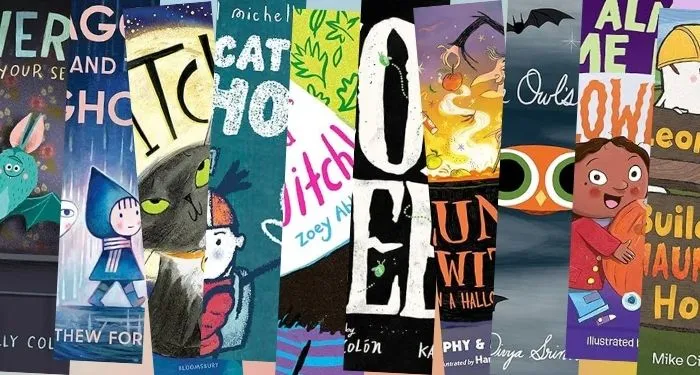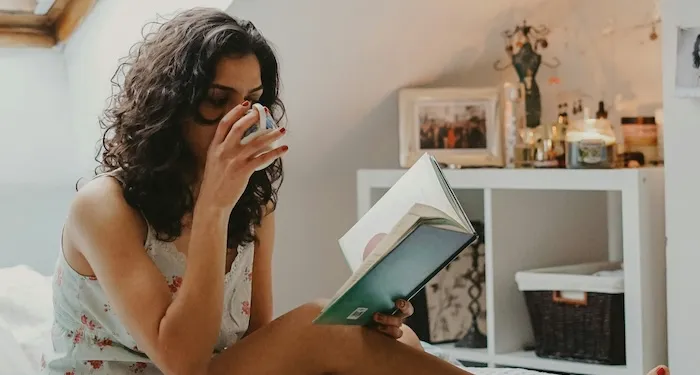In June 1980 Amina Claudine Myers was in a New York City studio, recording a tribute to the great blues singer Bessie Smith, when she began to improvise a theme on the piano: slow, stately, swelling with emotion. Myers is a deeply religious woman, and as she played she felt as if a spirit had entered the room. Joined by the bassist Cecil McBee and the drummer Jimmy Lovelace, her rhythm section on the album, she started to accompany herself with wordless vocals, at once mournful and yearning. “The voice just came,” she told me earlier this summer, when we met at her apartment in Hell’s Kitchen. It took possession of her for nearly fifteen minutes, until her last cries faded into silence.
Leo Feigin, her producer, broke into a sweat when he realized how long the track was. (He later discovered that the stopwatch he’d been using to record was a stopwatch for horse racing, with a dial designed for thirty seconds rather than a minute.) But “African Blues,” the final track of Myers’s classic recording Salutes Bessie Smith, turned out to be one of the most memorable vocal performances of the late twentieth century. It’s as riveting, and as singular, as Abbey Lincoln on “Triptych,” on Max Roach’s We Insist! The Freedom Now Suite (1960), in which her screams and shouts gave expression to the agonies of Black American women from slavery through Jim Crow.
An affirmation of resilience in the face of suffering, “African Blues” is plaintive and consoling: far from the desperation and ferocity in Lincoln’s performance. But the song’s origins were equally political. On the morning that Myers recorded it, she told me when we spoke in June, she had been thinking about the “sorrow in South Africa” and the struggle against apartheid. “You didn’t need any words to express the hurt and disappointment of the African people. Just singing sounds was sufficient.” Those sounds—“feelings with sounds,” she sometimes calls them—ranged from the moans of the sanctified Church to a kind of nasal singing reminiscent of the Senegalese vocalist Baaba Maal. Not only do they stir the listener, they unfold with inexorable narrative logic, evoking, almost inhabiting, the experiences of a people in sorrow, yet ultimately envisioning the dawn of liberation. James Baldwin told an acquaintance of Myers that he played “African Blues” whenever he grew despondent.
Myers has since performed “African Blues” in a variety of configurations, notably a striking arrangement for a gospel quartet, infused with the sounds of South African township music, on Augmented Variations (2009). On her new album, Solace of the Mind, she offers an account on solo piano as moving as it is restrained, just over three minutes long. She doesn’t sing, and hardly improvises; she simply repeats the melody, “like a hymn,” with subtle embellishments. The beauty of her touch, the spareness of the playing, create room for contemplation, allowing the listener’s mind to fill the spaces between the notes.
Solace of the Mind is Myers’s first album for solo piano since her 1979 session Poems for Piano: The Piano Music of Marion Brown. Comprised of ten short pieces, clocking in at just under forty-one minutes, it’s ideally heard in a single sitting. Several of the pieces are familiar from her previous albums and from the medleys she performs in concert: “African Blues,” “Song for Mother E” (a hymn in G flat, dedicated to her mother Elnora), “Cairo,” and the spiritual “Steal Away.” There is a short, lovely hymn in honor of John Lee Hooker, and a dark, beguiling piece called “Sensuous.” The album concludes with the shimmering “Beneath the Sun,” which revels in sounds produced on the lower registers of the piano. Throughout, Myers worries her notes, making them last until their final resonance can be felt; the result is a different, more elastic sense of time, a contemplative, hypnotic stillness.
The record is slow, expressive, powerfully ruminative—and disarmingly simple (which is not to say naive). Next to Solace of the Mind, most music sounds showy and cluttered. It’s as if Myers, who recently turned eighty-three, were zeroing in on the essence of her art. “I wanted the music to give some kind of warmth and inspiration, or bring people back memories of their ancestors, of their past, of love,” she told me. “This isn’t jump-up-and-down, rhythmic kind of stuff. My agent said it was dark, and I can understand that.”
To mine the depths of these songs she spent years working on them at home, allowing them to “grow,” as she puts it, and assume their ideal shape. The music doesn’t have the agonized sensibility that Edward Said regarded as characteristic of “late style,” but its elegiac mood suggests an artist reflecting on her life and work. “I feel the spirit of my ancestors,” Myers declares on “Ode to My Ancestors,” the only track not for piano, over a Hammond B-3 organ recording she made at home. She continues:
I feel the spirit of those gone before
Those who have shaped me into who I am
They speak to me
They speak to me still
As I continue my journey.
*
Over the course of her journey, Myers has never ceased to listen to those who came before her. Few musicians have been so successful in weaving jazz, blues, gospel, and classical influences into a distinctively personal idiom. As the pianist Craig Taborn told me, “Amina is an increasingly rare personality in the creative music scene in her ability to draw from the deepest background of the Black music experience without being mannered or nostalgic.” Like Nina Simone, an early influence, she is a blues singer who studied both gospel and classical piano; like Alice Coltrane, whom she heard in John Coltrane’s band in the mid-1960s, she is as much a spiritual messenger as a musician.
Born in 1942, she grew up in Blackwell, Arkansas, a hamlet of a few hundred residents fifty miles northwest of Little Rock. “We had our own community,” she recalls. “The white people would come and sit in the back of the church,” and young Black men who didn’t feel like attending services “would sit in the car with the door open so they could listen to the music inside. We had gardens, and fresh fruit for canning. The Black people there were so beautiful…. We never wanted to be with white people. We just wanted equality…. Everything you have in the big cities—teachers, philosophers, musicians—you had there.”
Myers’s family kept chickens and pigs in the yard; decades later, she told the composer George Lewis in a 2006 interview, she could still remember the “patter of chicken feet” in the dirt. As a little girl she would ride her grandfather’s horse without a saddle and pick pecans across the highway. She began piano lessons at age four, under the influence of her great-uncle Buford, a carpenter who sang and played clarinet. Not long after, Buford passed away, and her great-aunt, a schoolteacher, remarried and moved to Roosevelt, Texas, a Black community outside Dallas. At age seven Myers moved to Roosevelt at the invitation of her more prosperous relatives, who told her that for the first time in her life she would have an indoor toilet. Dividing her musical studies between gospel and Chopin, she soon established herself as one of the leading pianists and singers at the local Methodist church.
After moving back to Arkansas at fifteen she continued to pursue her study of classical music, first in high school and then at Philander Smith College, a historically Black Methodist college. The head of the music department at Philander Smith introduced her to the work of Aaron Copland, Elliott Carter, and Karlheinz Stockhausen, but he also hired her to play in his jazz band at proms and gave her lessons in the blues. On Saturday she’d come home late after playing in clubs; hours later she’d play organ in church, often falling asleep during the minister’s sermon. “He’d be speaking about people coming forward to join the church, and they had to wake me up to turn the organ on.”
Myers remains attached to the memory of her southern upbringing, which has inspired some of her finest compositions. The heartbreaking piece “Plowed Fields,” on her 1983 album The Circle of Time, grew out of a conversation she had with her mother as a little girl. “We were driving in Arkansas,” she told me, “when I saw a field of black dirt that had just been plowed, and I said to my mother, ‘I’d love to walk barefooted in that dirt.’” Her mother, whose parents had been too poor to afford shoes for their daughter, replied, “Not me, because I remember when my soles were tied to my feet.” After singing wistfully about this exchange, Myers brightens up, celebrating the sounds of crickets singing in a “unison and harmony” that no “mere instrument of man” can reproduce—not even, she adds, her melodica. “Plowed Fields” richly evokes her childhood discovery of the restrictions imposed by poverty and racism, yet it ends up affirming the sensuous pleasures of country life, something she has often cited as her greatest inspiration.
*
Myers acquired her understanding of music, as both spiritual art and practice of communal memory, in the South. But it was in Chicago, where she came to teach music in the public schools after graduating from college in 1963, that the gospel musician Claudine Myers became the jazz artist Amina Claudine Myers. The name was given to her in the late 1960s by the drummer Gerald Donovan, né Joe Shelton, who had changed his name to Ajaramu. (Myers told me that while she agreed to “Africanize” her name, she refused to part with “Claudine,” the name her mother had chosen.) Myers met Ajaramu a year after her arrival in Chicago. He asked her to join his trio with the alto saxophonist Skip James; soon after, they became a couple.
Ajaramu introduced her to the saxophonists Gene “Jug” Ammons and Sonny Stitt, who both immediately recognized her gifts as an improvising pianist. “I learned so much from playing with Jug,” she says. “He was so soulful, he’d play one note on ‘Angel Eyes,’ and women would go crazy.” It was Ajaramu, too, who brought her into the Association for the Advancement of Creative Musicians (AACM), a Black musicians’ collective formed in 1965 that new members could only join by invitation. She was one of its first female members, but she says she never experienced sexism in the organization. “The AACM was like a family,” she recalls. “No one ever tried to tell you what to do.” The pianist and composer Muhal Richard Abrams, the AACM’s founding father, “didn’t need to see what I wrote. He knew what I could do more than I knew. He knew me better than I knew myself.”
In his 1968 experimental play The Dream, Abrams cast Myers as the crass, social-climbing wife of a jazz musician, played by the saxophonist Joseph Jarman of the Art Ensemble of Chicago. She wore a blonde wig and a negligee and smoked cigarette after cigarette, “bitching” about her husband’s failure to find work. “At one point,” she remembers, laughing, “I knocked a copy of Downbeat out of his hands, and Joseph had an expression on his face that terrified me, like I’d touched a nerve!” In the early years of the AACM, an experimental collective known for its cerebral, often dissonant explorations of sound, Myers’s vernacular allegiances—not to mention her gender—could make her seem like an outlier. But she would eventually assume a unique place in the AACM, as its sole singer-songwriter and its most powerful link to the musical and spiritual traditions of the southern Black Belt.
The AACM, she says, “helped develop the way I am today.” In 1969, the year she quit her job teaching so that she could dedicate herself to her career in music, Myers made her recording debut on the saxophonist Maurice MacIntyre’s Humility in the Light of the Creator. She collaborated (and would eventually record) with almost all the AACM’s leading members, including Abrams, Henry Threadgill, Anthony Braxton, and the Art Ensemble of Chicago. The “complete freedom” she experienced in the group led her to see herself as an artist, and to play music that had scarcely any resemblance to her work with Ammons and Stitt. “I remember playing one of my compositions at a show in Gary, Indiana, with [the drummer] Don Moye and Henry Threadgill, and a man came up to me afterwards and said, What was that? He thought I was going to be doing what I’d done with Jug, and he asked me like he was horrified.”
*
By the early 1970s Myers felt she had to choose between her work within the AACM and the more straight-ahead jazz she’d been playing with Ammons and Ajaramu. “Ajaramu was my creative brother, but I no longer wanted to do Ajaramu’s thing,” she says. “I wanted to do my own thing. It was the same with Gene Ammons: after the third time on tour, I started hearing other stuff and wanting to do it, but every time I would try to go outside the chord structure, Jug would say, ‘You ain’t playing the blues, Claude.’” Most of her AACM colleagues, however, were no longer in Chicago. The Art Ensemble, Braxton, and the trumpeter Wadada Leo Smith had left for Paris in 1969, and when they returned to the States they moved to the East Coast, mostly to New York.
“The music scene in Chicago was dying,” Myers recalled—so in 1975 she took a job as an accompanist for the choir at the Ebenezer Baptist Church, where Mahalia Jackson had sung. Before long, however, she “felt I was going backwards musically.” In 1976 she resigned from the Church and joined the exodus of AACM members to New York City. The transition was difficult. “Sometimes I didn’t have work for months,” she recalls. “I had no gigs at the beginning, and I had to draw on the pension I had from teaching.” She picked up work writing music for off-Broadway theater and eventually became the assistant musical director for Ain’t Misbehavin’. But it took her nearly two years until she could afford an apartment of her own.
One of the first jazz musicians she befriended in New York was the alto saxophonist Marion Brown, a quiet, bookish man whose music conjured memories of his childhood in Georgia: its sounds, climate, and folkways. Recognizing a kindred spirit, he invited her to record an album of his compositions for solo piano. She rehearsed them on a “raggedy piano” that belonged to the drummer Eddie Moore, in whose apartment she was staying at the time. The only composition by Myers on Poems for Piano was “Plowed Fields,” which she performed without the lyrics, under the title “Going Home,” but the album was as much hers as it was Brown’s, prefiguring the pastoral, blues-inflected spirituality of her later work.
The most important musical relationship that Myers forged in New York was with Lester Bowie, a trumpeter from St. Louis who was best known as a member of the Art Ensemble of Chicago. They knew each other from Chicago, and both had been among the few non-Chicagoans in the AACM. Both were also keen to fuse the freedoms and innovations of the avant-garde with gospel, blues, soul, and other Black vernacular traditions. At the time they reconnected in New York, Myers was preparing Ain’t Misbehavin’ for its move to Broadway. She wanted to play jazz but still didn’t imagine herself as a professional touring musician.
“I was very insecure, so I was shocked that Lester came over to my house to ask me to play with him,” she recalls. “But when Lester asked if I wanted to go to Europe, I immediately said yes and let Ain’t Misbehavin’ go. That first trip was to Rome. I’ve been back twenty-eight times since then. Traveling with Lester opened up a whole new thing for me. I was the only woman in the band, and it was just beautiful.” Her first great recorded performance, an original composition called “Amina,” a dirge nearly twenty minutes long, appears on Bowie’s 1978 quintet session African Children. Like “African Blues,” it was created on the spot, when Myers played a few chords and Bowie told her: “keep doing that.” Moved to sing, she started accompanying herself with the wordless vocals that would become a signature of her work as a leader.
Salutes Bessie Smith remains her masterpiece, with its brash, tough-minded interpretations of Smith’s songs, and the majestic “African Blues.” But scattered across her other albums are songs of visceral, nearly physical power, often in the form of prayers or devotional messages. In “Have Mercy Upon Us,” on Song for Mother E (1980), a duet with the drummer Pheeroan akLaff, the eerie sounds of her organ accompany a hypnotic chant. “Thank You,” from Sama Rou (2016), a piece almost the opposite in emotional tone, is a plainspoken expression of gratitude for love, family, and blessings. The lyrics should sound mawkish, but she somehow imbues them with an utter authenticity of feeling. It’s precisely this intensity of conviction, the fusion of modernist sound exploration and old-time religion, that has turned her all-too-rare solo recitals into momentous occasions.
*
In 2024 the National Endowment for the Arts named Myers a Jazz Master. But she still speaks about her work with striking humility and surprise, indeed astonishment, that she’s made it this far. She has supported herself by playing in other people’s groups (her employers have included Art Blakey, Charlie Haden and Archie Shepp); even today, she says, “I can’t tell you how I survived.” For years she subsisted on “crackers, fruit, and water.” She says this without self-pity or bitterness. “I was never hungry, and I was no longer afraid. I was ready to deal with New York, because I felt free here.”
Since 1977 she has lived in a high-rise where the late Muhal Richard Abrams and other AACM artists have been among her neighbors. The living room of her small apartment is filled with art and musical instruments she has collected over five decades as a musical troubadour: a Moroccan hand drum, a kora, and a mask from Senegal; a picture of Morningside Park by Ming Smith that the photographer gave her; a painting of a nighttime scene from a Polish artist she met in Warsaw; and her own color field paintings, delicate abstractions in green, orange, and pink suggestive of landscapes.
There have been long lapses between her solo projects, “because no one asked me to record”: twenty years between In Touch (1989), an ill-judged fusion session, and Augmented Variations, an album of adventurous arrangements for gospel quartet; seven years between Sama Rou, which showcased her interpretations of Black spirituals, and Solace of the Mind. If Myers had difficulty attracting the interest of record labels, it’s probably because she slipped through the cracks of the artificial genres imposed by the music industry. Some found her work too avant-garde; others found it too commercial. Asked to define herself, she has always replied that she plays blues, jazz, and gospel in “extended forms.”
Thanks to Sun Chung, the producer of Red Hook Records, Myers has returned to the recording studio three times in the last few years: in 2021 to make a gorgeous album of tone poems, Central Park’s Mosaics of Reservoir, Lake, Paths and Gardens, with Wadada Leo Smith; in 2023 for Solace of the Mind; and a few months ago for a follow-up with Smith. “Amina is able to access a stream of inspiration that flows independently of her,” Smith told me. “Most musicians don’t have access to that. They do what I call ‘functional construction.’ But Amina can step past that zone and create a pure musical force.”
“He said that?” Myers asked when I read the quote to her. I invited her to explain how she achieves that “pure musical force” in performance. “What happens,” she said, “is that a feeling comes over me when I play, a feeling that I believe comes from the Creator.” Solace of the Mind is full of such transcendent moments, not least in “Song for Mother E,” the second track. For the first four minutes, we hear an arresting rubato passage, evocative at once of a hymn and of a classical prelude, sometimes quickening, sometimes slowing down. It’s not clear whether this is an introduction to the piece, or whether it is the piece: the sense of pure, relentless flow is never disrupted, even as lower bass notes rise to the surface and Myers’s playing grows in density. The theme hasn’t even been stated, but her touch—delicate yet firm, ever supple in its use of shifting dynamics—has already conjured its own region of the mind, a place of remembrance, reflection, and prayer. To reach that place, Myers told me, she has to close her eyes. When she does, “I can see the feelings better. I let the spirit speak through me, and whatever spirit I feel, the fingers just follow.”




















 English (US) ·
English (US) ·